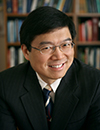Research in noninvasive subcutaneous imaging recognized with 2015 Britton Chance Biomedical Optics Award
 |
| Lihong Wang |
BELLINGHAM, Washington, USA -- Lihong Wang, a leading innovator in the field of biomedical optics and imaging and a Fellow of SPIE, has been awarded the 2015 Britton Chance Biomedical Optics Award for his pioneering technical contributions and visionary leadership in the development and application of photoacoustic tomography, photoacoustic microscopy, and photon transport modeling. Wang will receive his award at the start of the BiOS Hot Topics session on 7 February at SPIE Photonics West 2015 in San Francisco, California.
The award is presented annually by SPIE, the international society for optics and photonics, in recognition of outstanding lifetime contributions to the field of biomedical optics through the development of innovative, high impact technologies.
Wang holds the Gene K. Beare Distinguished Professorship of Biomedical Engineering at Washington University in St. Louis, and is Editor-in-Chief of the Journal of Biomedical Optics. The book Biomedical Optics: Principles and Imaging co-authored by Wang and Hsin-I Wu won the 2010 Joseph W. Goodman Book Award, and was recognized as the most practical text in the field in the Britton Chance Award citation.
Photoacoustic tomography is expected to impact biology and medicine broadly by providing multiscale in vivo functional and molecular imaging of structures ranging from subcellular organelles to organs, enabling a noninvasive look at subcutaneous tissue at a deep level.
Wang's laboratory invented or discovered:
The National Institutes of Health awarded Wang a $1.1 million grant to research how to image the electrical activity of neurons deep inside the brain, in conjunction with the BRAIN (Brain Research through Advancing Innovative Neurotechnologies) initiative. The initiative is a part of President Obama's focus on accelerating the development of innovative technologies that help understand the human brain. Wang's project information is available on nih.gov.
Wang's BiOS 2014 Hot Topics talk on "Photoacoustic tomography: ultrasonically beating optical diffusion and diffraction" gives an overview of the field, and is available on video from SPIE.tv.
SPIE is the international society for optics and photonics, a not-for-profit organization founded in 1955 to advance light-based technologies. The Society serves nearly 256,000 constituents from approximately 155 countries, offering conferences, continuing education, books, journals, and a digital library in support of interdisciplinary information exchange, professional networking, and patent precedent. SPIE provided more than $3.2 million in support of education and outreach programs in 2013.
###
Contact:
Public Relations Manager
amy@spie.org
+1 360 685 5478
@SPIEtweets